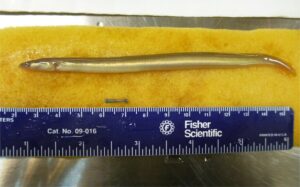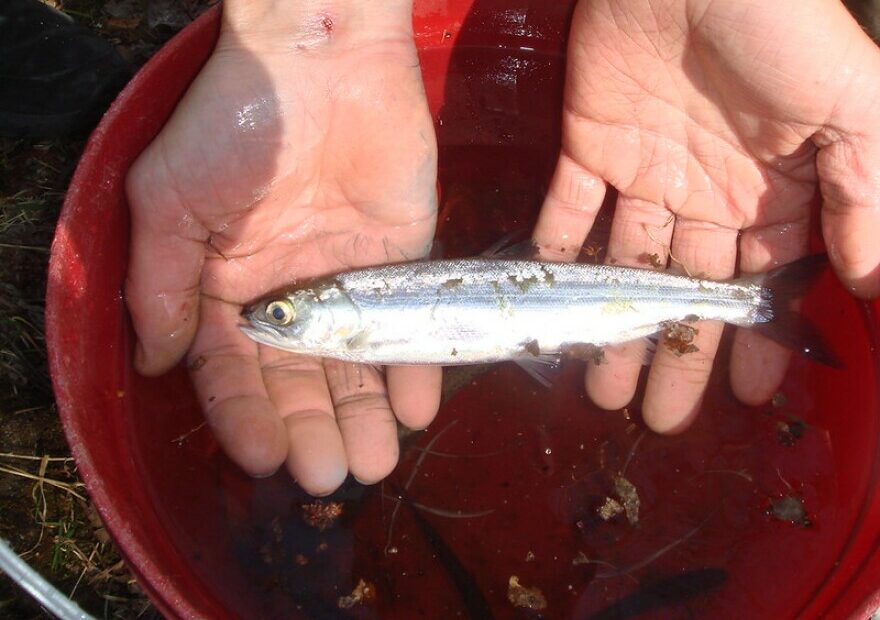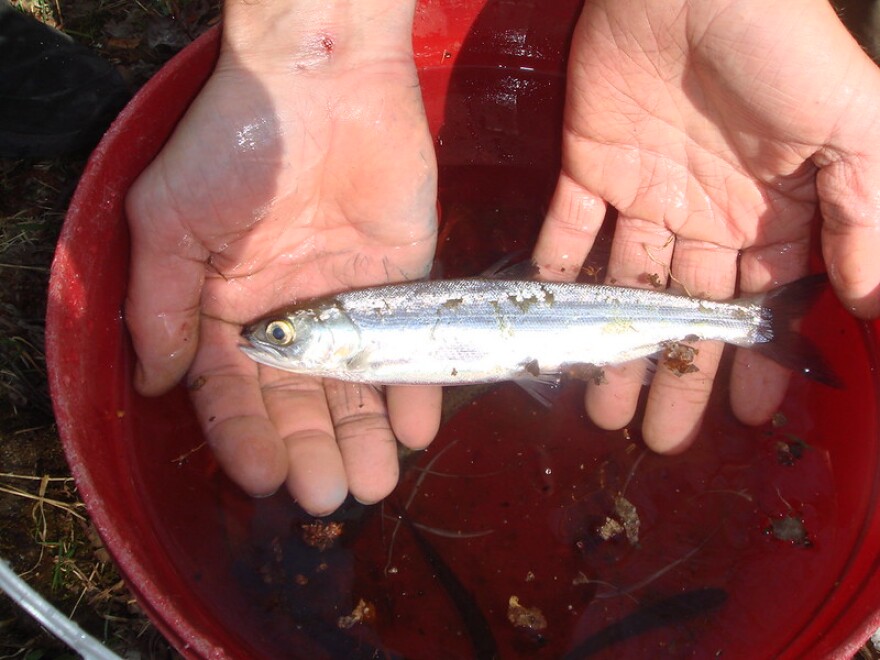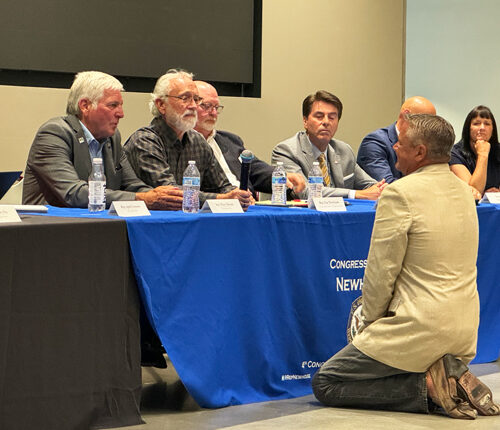Tracking some young salmon has always had one hitch: the tiny fish are too small for the injectable tags researchers use to track fish as they move past hydropower dams. To make the tags smaller, researchers also had to shrink the batteries that power the fish tags.
Now, new battery technology developed at Pacific Northwest National Laboratory will allow researchers to better study small fish, such as juvenile sockeye salmon and Pacific lamprey.
Larger batteries have limited the size of fish tags, which means they can’t be injected into very small fish, said Daniel Deng, a mechanical engineer with Pacific Northwest National Laboratory.
“Larger batteries automatically exclude many of those sensitive species that we want to study,” Deng said.
The smaller the fish tag, the better the survival rate for salmon, said Brian Bellgraph, a freshwater fisheries ecologist with Pacific Northwest National Laboratory.
To study and track the juvenile salmon, researchers inject the small tags into fish.
“I call it an outpatient procedure for fish,” Deng joked.
Larger tags must be surgically implanted.
With the development of the new battery technology, researchers would like to study young sockeye salmon that will be released above Grand Coulee Dam, a part of reintroduction efforts for salmon in the Upper Columbia River.
This could be one of the first juvenile sockeye acoustic fish tag studies, Bellgraph said.
“Getting really specific information on them at hydropower dams is something that hasn’t hasn’t really been done,” Bellgraph said.
Chief Joseph and Grand Coulee dams have blocked migrating salmon from the Upper Columbia for around 100 years. The Upper Columbia United Tribes want to reintroduce salmon into the blocked area.
So far, research suggests salmon can survive behind the dams. Researchers want to know more about the salmon released in the blocked areas as they migrate out to sea.
The Upper Columbia study would provide more information about how and when juvenile sockeye migrate through dams.
However, Bellgraph said, there will be some challenges.
For example, young sockeye head out to sea at different times – some sockeye leave right away and other sockeye hang around Lake Roosevelt up to a year after they’ve hatched, Bellgraph said.
Those differences in migration mean researchers may design two different studies, Bellgraph said. In one study, the fish tags would ping tracking receivers right away. In another study, the fish tags would have a six-month delayed start.
The delayed pinging would allow researchers to track fish for up to a year, Bellgraph said.
The new tags are smaller than a grain of rice. The batteries that power the tags are smaller, lighter and last longer than old technology, Deng said.
“Battery life is really important, especially if you want to study fish in the Upper Columbia River because it will take them longer to get to the ocean,” Deng said.
Deng and his team also have designed small tags that researchers can inject into Pacific lamprey and American eels, which are dwindling in the eastern U.S.
“If American eels are added to the Endangered Species List, a lot of hydropower in the eastern U.S. will be affected,” Deng said.
Hopefully, Deng said, the tags can provide information to help the eels so that they aren’t added to the Endangered Species List.

A young American eel next to an acoustic tag. Researchers can inject small tags into Pacific lamprey and American eels, which are dwindling in the eastern U.S. CREDIT: Stephanie Liss
Additionally, researchers plan to use the smaller tags to study juvenile lamprey at Lower Granite Dam on the Snake River. That research should begin this spring.
An even smaller, next-generation battery in the works could help researchers study invasive shad in the Northwest, Deng said.
“They are everywhere in fish ladders in the Columbia,” Deng said.
Researchers plan to test the American shad tag next year, Deng said. Although the next-generation tag is designed to study shad, he said it could benefit other small fish.




















